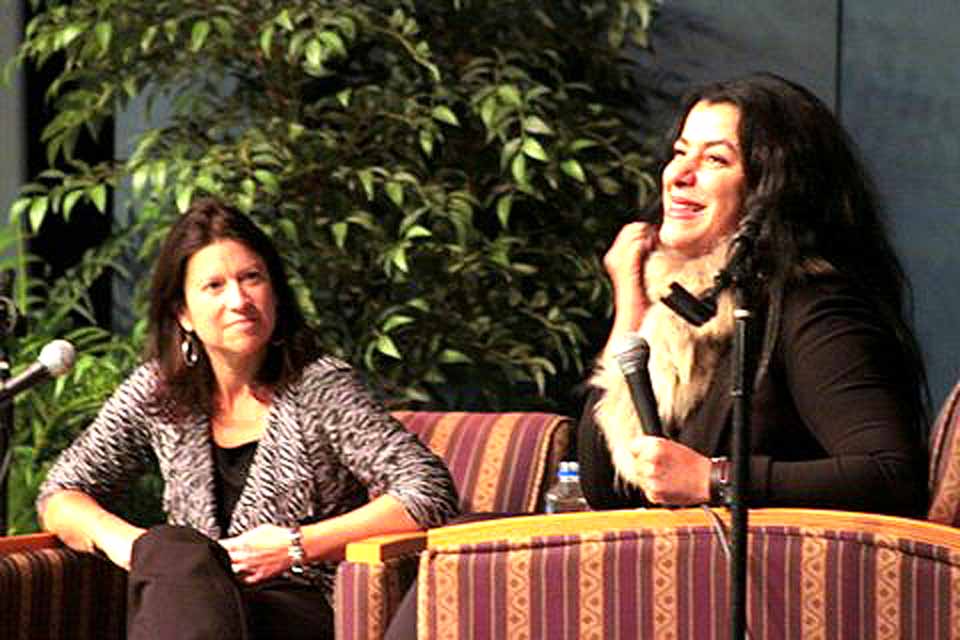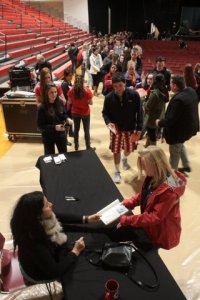Author Satrapi’s ‘Persepolis’ Pierces
Censorship, She Tells SUNY Audience

By LIBBY CUDMORE • allotsego.com
ONEONTA

Seated comfortably between ferns and a slate-blue backdrop, Marjane Satrapi very quickly made herself at home chatting with Dr. Susan Bernardin. “English is not even my third language,” she said in a thick French accent by way of introduction. “When I come to American for the first time, I learned English by watching a lot of movies, so I was saying the f-word a lot. I will not say it again here.”
Satrapi, author of SUNY Oneonta’s 2014 Common Read “Persepolis”, was on hand this evening to give the Mills Distinguished Lectureship to a full Alumni Field House. “When I was young, I thought I had to write like Dostoevsky, but I couldn’t, because he was a genius,” she said. “If I was Dostoevsky, you would know it.”
“Persepolis” deals with Satrapi’s childhood during the Islamic Revolution, during which she rebelled by declaring herself a prophet, wearing high-top Nikes and buying illegal tapes of AC/DC and Kim Wilde. “I was a teenager, all teenagers have bad taste in music,” she joked with the crowd.
She read Batman comics when she was a kid, but it wasn’t until she met French comics artist David Beauchard, who mentored her and introduced her to comic writers like Art Speigelman, author of “Maus.”
The comic was published in 2000 and has been translated into over 40 languages. She wrote and directed the animated film version, made in 2007, was nominated for an Academy Award. “A film is a machine for bringing people together,” she said. “It is like having 3,000 people all reading my book at the same time.”
What she didn’t expect, however, was that it would find it’s way to her native Iran, where she has not returned in 15 years. “It was released December 27 and by December 29, I had a call from a friend in Iran who said that she had just watched it, dubbed in Persian!” she said. “In Iran, there is no notion of copyright, so they do whatever they want.”
The book is not without its share of controversy. She spoke at length about her book being banned across the country. “Dictators ban books,” she said.
But she also had a sense of humor about it. “If you want children to read, ban a book,” she said. “Then it becomes bad, and all the kids want to read it, and sales shoot up.”
And during the question-and-answer session, she told students the most important lesson she knew – not to go through life afraid. “I am the person I am not because of the nice things I did, but because of the mistakes I made, the slaps I got,” she said. “So do not be scared to rebel if someone oppresses you. I am a rebellious woman and I am proud!”

